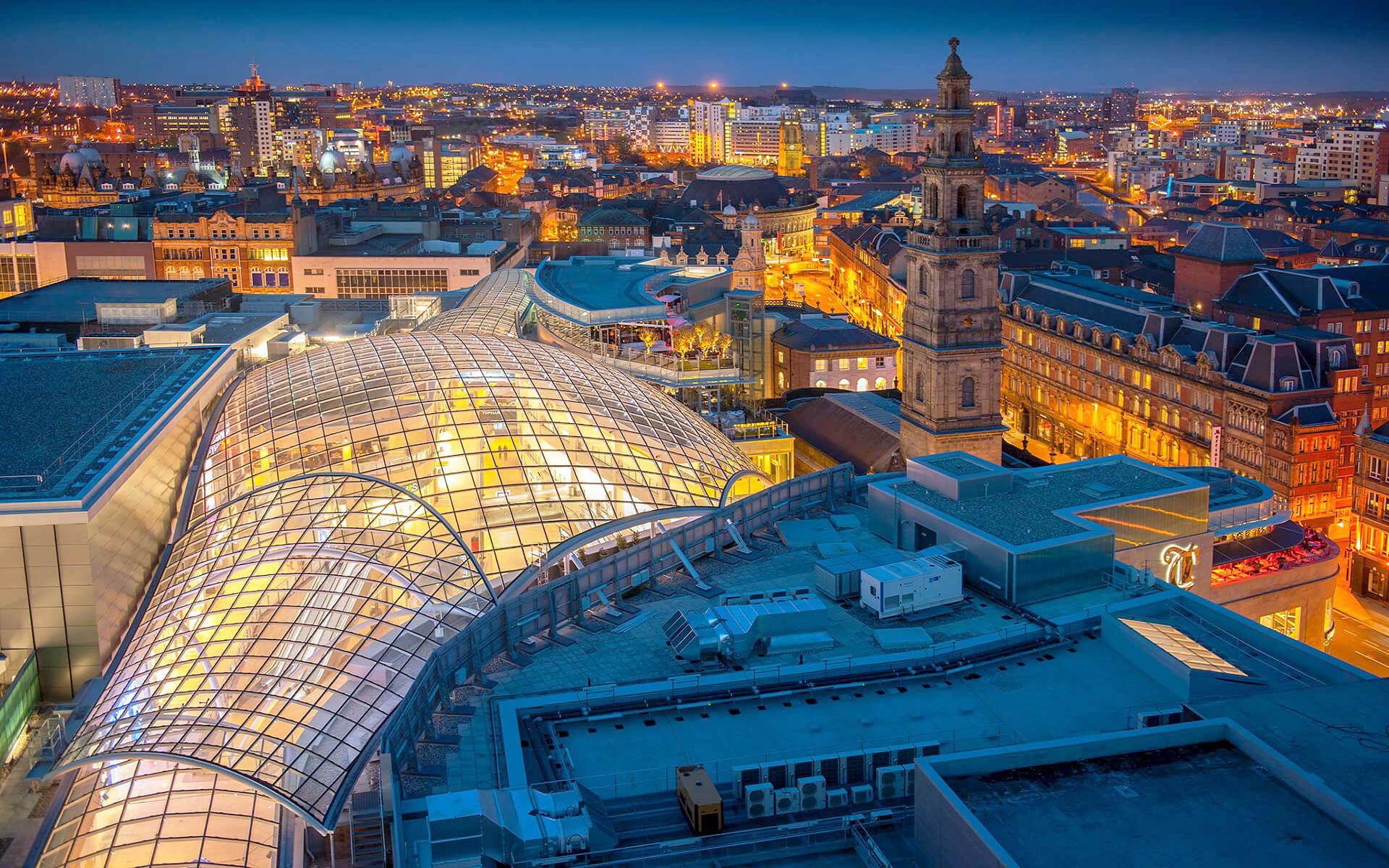Leeds has a varied economy, with service sector employment currently outnumbering traditional industrial sectors. The Leeds district has 401,000 registered workers in 2002. 24.7 percent worked in government, education, and health care, 23.9 percent in banking, finance, and insurance, and 21.4 percent in distribution, hotels, and restaurants. Leeds’ financial structure varies the most from that of the area and the country in the banking, finance, and insurance industries. Leeds’ finance and services sector was valued £2.1 billion in 2011, making it the UK’s fifth biggest behind London, Edinburgh, Manchester, and Birmingham. Retail, call centers, offices, and the media have all contributed to the high pace of economic development. The city also houses the Bank of England’s sole subsidiary office in the United Kingdom. The city’s GVA was £18.8 billion in 2012, with the Leeds City Region as a whole creating an economy of £55 billion.
Leeds’ economy expanded at a slower pace than the UK as a whole, 39 percent vs. 44 percent, between 2002 and 2012, and was still 2.6 percent behind its pre-recession high in 2012.
Leeds is home to approximately 30 national and international banks, many of which have northern or regional offices. It is home to Yorkshire Bank and substantial Barclays, HSBC, Santander, Lloyds Banking Group, and RBS Group activities, as well as First Direct’s headquarters.
In addition, the city is a major hub for equity, venture, and risk capital. YFM Equity Partners, a venture capital firm based in Leeds, is currently the UK’s leading supplier of risk financing to small and medium-sized businesses.
William Hill, International Personal Finance, ASDA, Leeds Building Society, and Northern Foods are among the city’s significant employers. TD Waterhouse, Capita Group, KPMG, Direct Line, Aviva, Yorkshire Building Society, BT Group, Telefónica Europe (otherwise known as O2), and KPMG all have significant presences in the city.
Leeds is home to over 150 legal companies, which employ around 6,700 people. “Leeds has a sophisticated and highly competitive legal market, second only to London,” according to The UK Legal 500.
Corporate finance, corporate restructuring and insolvency, global project financing, trade and investment, commercial litigation, competition, construction, Private Finance Initiatives and Public Private Partnerships, tax, derivatives, IT, employment, pensions, intellectual property, sport and entertainment are all areas where Leeds has specialized legal expertise.
Leeds’ place as one of the UK’s leading legal centers was cemented in April 2009 when an Administrative Court was established in the city. Previously, the court exclusively met in London.
Leeds is the UK’s third biggest manufacturing city, with half of the country’s industrial base within a two-hour drive. Leeds manufacturing enterprises employ roughly 1,800 people, accounting for 8.8 percent of the city’s overall workforce. Engineering, printing and publishing, food and beverage, chemicals, and medical technology are the most important sub-sectors.
The city also has a thriving creative economy, notably in the digital game industry. Activision, the creators of the mobile versions of the Call of Duty series, and Rockstar Leeds, the creators of the Grand Theft Auto series, both have studios in and near the city. Outside of London, Leeds is the only city to have held the Eurogamer Expo, however Birmingham will host in 2014.
Office projects, which have historically been concentrated in the city’s core, have spread south of the River Aire, totaling 11,000,000 square feet (1,000,000 m2). Between 1999 and 2008, £2.5 billion in property development was performed in downtown Leeds, including £711 million in offices, £265 million in retail, £389 million in leisure, and £794 million in housing. In the time, £26 million was spent on new property development for manufacturing and distribution purposes. The city center employs 130,100 people, accounting for 31% of the total workforce in the area. In 2007, finance and business employed 47,500 people, public services employed 42,300, and retail and distribution employed 19,500. Leeds city centre is home to 43 percent of financial sector employment in the region, while 44 percent of people working in the city centre reside more than nine kilometers (5.6 miles) away. Leeds is a major tourist destination; in 2009, it was the eighth most visited city in England by UK tourists. is the 13th most visited city by travelers from other countries. According to VisitEngland, the day visitor market in Leeds welcomes 24.9 million visitors each year, generating approximately £654 million in revenue for the city.
Leeds was selected one of five “cities to watch” in a study issued by the Centre for Cities in January 2011. According to the research, the typical person in Leeds earns £471 per week, which places them seventeenth nationally, and 30.9 percent of Leeds inhabitants have NVQ4+ high level credentials, which places them fifteenth nationally. In the period June 2012 to June 2013, employment in Leeds was 68.8 percent, which was lower than the national average, while unemployment was higher than the national rate at 9.6 percent. It also suggests that welfare cutbacks will have the least impact on Leeds in 2014/2015, with a forecast reduction of -£125 per capita, compared to -£192 in Liverpool and -£175 in Glasgow. Leeds has a lower level of deprivation than other big UK cities, and its average income is higher than the national average.


